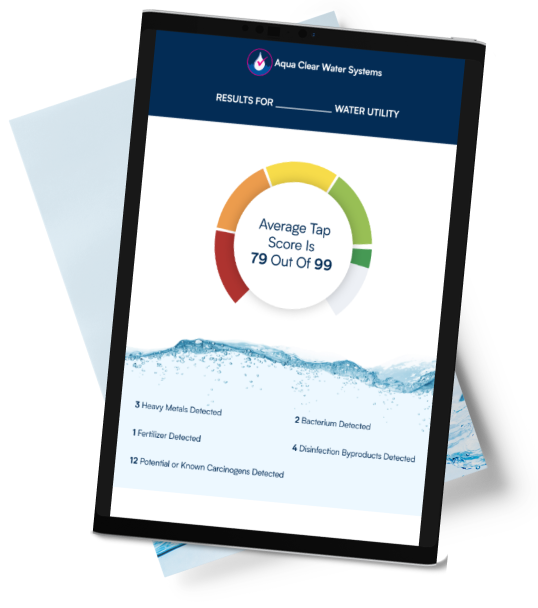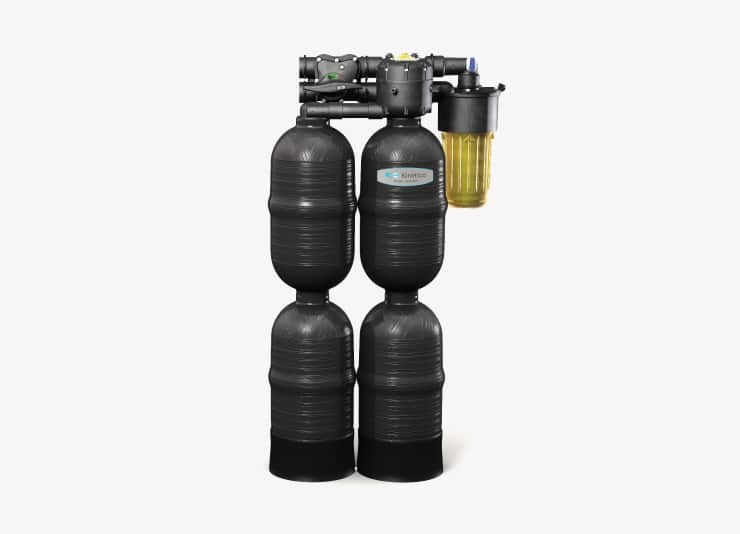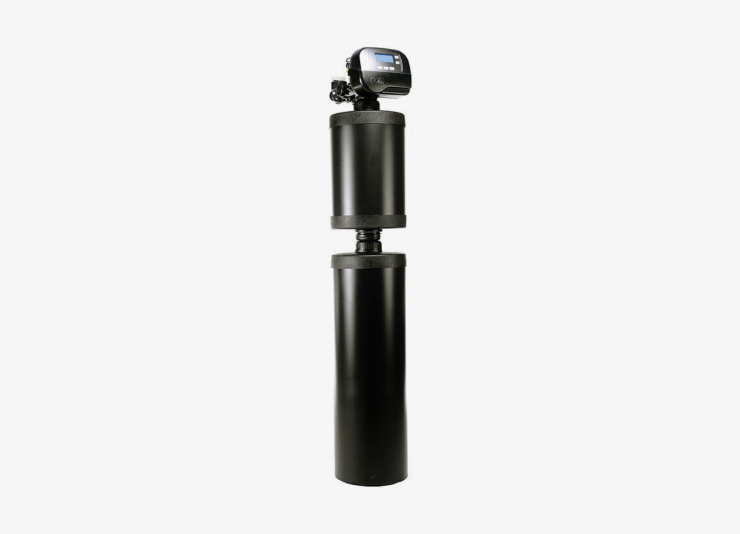The pH of water is a metal commonly found in natural water supplies. The pH scale is a logarithmic scale ranging from 0 to 14, where a pH of 7.0 is considered to be neutral. Any water with a pH lower than 7.0 is said to be “acidic” and water above 7.0 is called “basic”, as shown in the pH scale below.
Most natural rainwater is acidic, with pH levels often approaching 5.0 – 6.0. This is because rainwater is very low in dissolved solids, and the nearly pure H2O reacts easily with CO2 in the air to form carbonic acid. As rainwater enters the groundwater system it dissolves minerals from the soils and rocks, adding hardness and raising the pH.
The primary problem with acidic or corrosive water is that it tends to dissolve metal components in plumbing systems and water-using appliances. Homes with copper plumbing and metal fixtures are especially susceptible to this problem. The most common sign of low pH is blue-green staining on porcelain bathroom fixtures, showers, toilet bowels, or a metallic taste to the water.


Problems From Acidic Water
- Decreased lifespan of water heaters due to possible premature failure or tank leakage
- Corrosion and premature failure of household plumbing and plumbing fixtures
- Imparts a bitter or sour taste to your water because of elevated levels of metals
- Results in the formation of hard to remove blue-green stains on drains and porcelain fixtures
- Consumption of water with elevated levels of toxic metals: lead, copper, chromium, and zinc have been shown to cause both acute and chronic health problems
- Water has potential to dissolve harmful metals and other contaminants from groundwater system.

Treatment For Low pH Water
Most low pH water problems can be corrected by a process called "Acid Neutralization". This is similar to taking Tums® when you have acid indigestion. To raise the pH of the water me micic Mother Nature by adding minerals to the water to buffer the pH.
Option 1: Calcium Carbonate (Calcite)
The Kinetico® Acid Neutralizer utilizes a single large tank filled with fine, granular calcite. As the water passes through the calcite bed from the bottom up, the carbonate slowly dissolves in the acidic water raising the pH to levels near 7.0 (neutral pH). As the calcite dissolves away, eventually the tank has to be re-bedded with new minerals. The time for the rebed depends upon the pH of the water and the water usage.
The use of calcite also causes the hardness of the water to be increased significantly, since Ca is being added to the water. If the water already has a natural hardness, requiring a water softener, then using calcite to raise pH is the best choice since a the softener is needed anyway.
Pros of Calcite Neutralization
- Less expensive then alternative methods
- Simple maintenance - usually once per year
- Non - Electric (Upflow Only)
- Has minimal footprint
Cons of Calcite Neutralization
- Increases hardness of water
- Limited pH control (cannot tune system)
- Requires addition of water softener
- Requires post-filter for calcite fines
Option 2: Sodium Carbonate (Soda Ash)
Another way to get carbonate into the water is to use sodium carbonate, called soda ash. Soda ash is a fine powder and must be mixed up into a liquid solution and injected into the water supply.
Unlike the calcite system, the water hardness is not changed using this method. If there is no natural hardness, iron, or manganese then this would be an excellent choice.
Pros of Soda Ash Neutralization
- Does not raise hardness of water (may not need a water softener)
- Gives more precise control of pH (can control solution strength and injection time)
- Does not require post-filter
Cons of Soda Ash Neutralization
- More expensive than calcite system
- Requires electricity
- Must mix up liquid solutions periodically
- Pump needs annual service
- Needs larger footprint



To prevent corrosion of plumbing systems, the EPA recommends, that potable drinking water supplies have a pH between 6.5 and 8.5. If a public drinking water supply is corrosive, the state generally requires that the water be treated to make the water non-corrosive.
At Aqua Clear Water Systems, we pride our selves on providing the highest quality water filtration installation in all of Tennessee. We also offer soft water systems for homes, home water systems, as well as water filter for coliform bacteria installations for businesses.
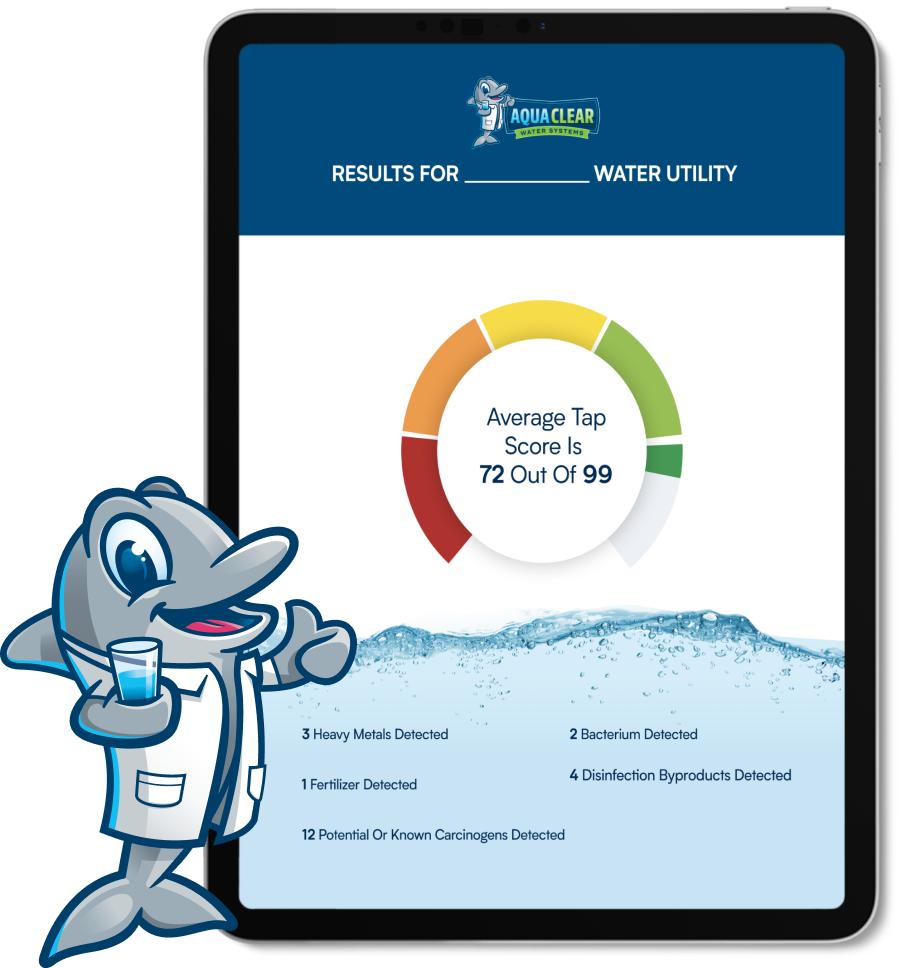
Get Your FREE Instant Water Report To Know Exactly How Safe Your House & Drinking Water Is In Just 2-Minutes!
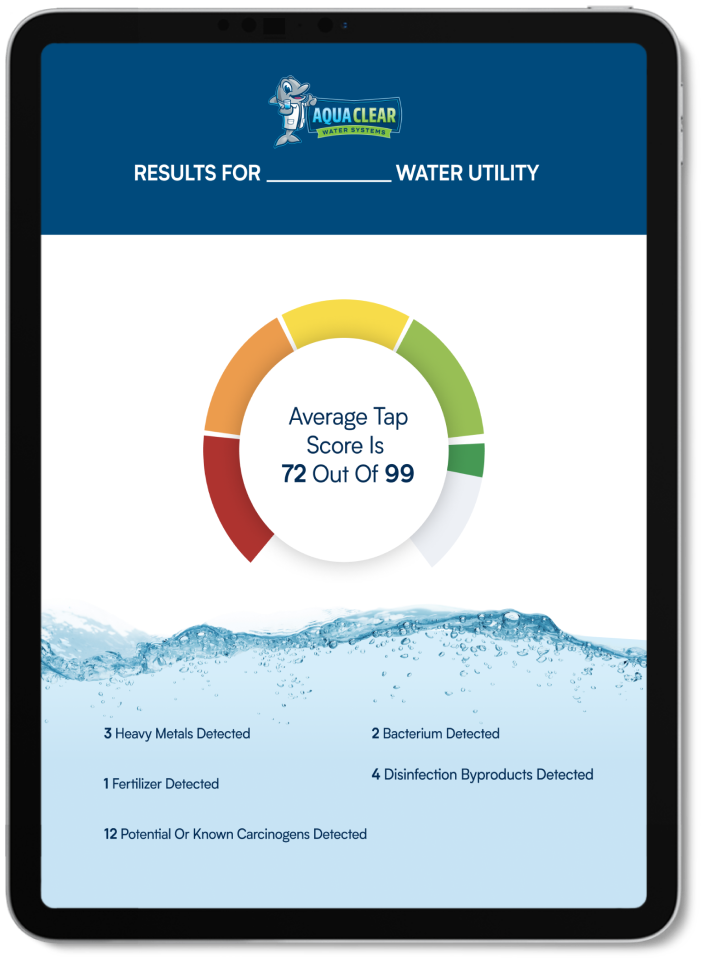
Don’t risk your family’s health! Just give us your zip code and in 2-minutes we’ll tell you exactly what contaminants are in your county or city’s water and how they affect your health.


